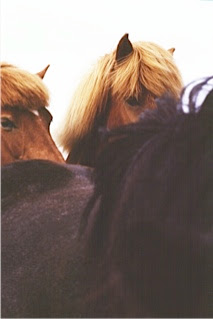Authors don’t have total say over their books’ titles. Publishing houses have people who specialize in such things as the marketability of a phrase—something I’m apparently not so talented at, since only two of the titles I’ve picked for my five books have made it through the process.
“Song of
the Vikings,” for instance, wasn’t my choice for my upcoming biography of
Snorri Sturluson, the story of how a scheming Icelandic chieftain gave Norse mythology to the world.
But it
has a pleasing tension to it. Singing is not the first action that comes to
mind when thinking about Vikings. Yet it was through their songs—using “song”
the way Walt Whitman did in “Song of Myself”—that Snorri Sturluson, writing in the early 1200s, was able to
reconstruct the Viking world of centuries before. Viking songs are the source
of almost everything we know about the gods, kings, and warriors who ruled the
North between 793 and 1066 (the Viking Age) and for two centuries after, until
the Icelandic Sagas were written—some of the best by Snorri himself—in the
1200s.
Poets,
or skalds, were a fixture at the Norwegian court for over four hundred years.
They were swordsmen, occasionally. But more often in his collection of sagas about the kings
of Norway, Heimskringla, Snorri depicts skalds as a king’s ambassadors, counselors,
and keepers of history. They were part of the high ritual of his royal court,
upholding the Viking virtues of generosity and valor. They legitimized his
claim to kingship. Sometimes skalds were scolds (the two words are cognates),
able to say in verse what no one dared tell a king straight. They were also
entertainers: A skald was a bard, a troubador, a singer of tales—a time-binder,
weaving the past into the present.
 |
| Illustration by Gerhard Munthe. |
Who would
remember a king’s name if there were no poems composed about him? In a world
without written record—as the Viking world was—memorable verse provided a
king’s immortality. As the skald Sigvhat Thordarson said to King Olaf the Saint
(1015-1030), in Lee Hollander’s 1964 translation of Heimskringla:
List to my song, sea-steed’s-
sinker
thou, for greatly
skilled at the skein am I—
a skald you must have—of verses;
and even if thou, king of
all Norway, hast ever
scorned and scoffed at other
skalds, yet I shall praise thee.
We know
the names of over two hundred skalds from before 1300, including Snorri, one of
his nieces, and three of his nephews. We can read (or, at least, experts can)
hundreds of their verses: In the standard edition, they fill a thousand
two-column pages. What skalds thought important enough to put into words
provides most of what we know today about the inner lives of people in the
Viking age, what they loved, what they despised. The big surprise is how much
they adored poetry. Vikings were ruthless killers. They were also consummate
artists.
“These
old Norse songs have a truth in them, an inward perennial truth and greatness,”
said the Victorian critic Thomas Carlyle. “It is a greatness not of mere body
and gigantic bulk, but a rude greatness of soul.”
 |
| Illustration by Gerhard Munthe. |
Whether
Viking songs were sung, chanted to the strumming of a harp, or simply recited,
we don’t know. Recently,
Benjamin Bagby and the group Sequentia
has tried to reconstruct the music of some Viking songs (with mixed results, in my opinion) on
their 1999 album “Edda.”
You can sample it at Amazon here: http://www.amazon.com/Edda-Icelandic-Medieval-Iceland-Sequentia/dp/B00000IFOM
Or on
Youtube: http://www.youtube.com/watch?v=ghq4nrvldkY
For a
completely different approach to the concept of a “Song of the Vikings,” listen
to this delightful recording made in 1915 by the Victor Male Quartet, available
through the National Jukebox project of the Library of Congress:
And
finally, there’s Todd Rundgren’s “Song of the Vikings” here:
Let me know if you find any more.
Join me again next Wednesday at
nancymariebrown.blogspot.com for another writing adventure in Iceland or the
medieval world.








